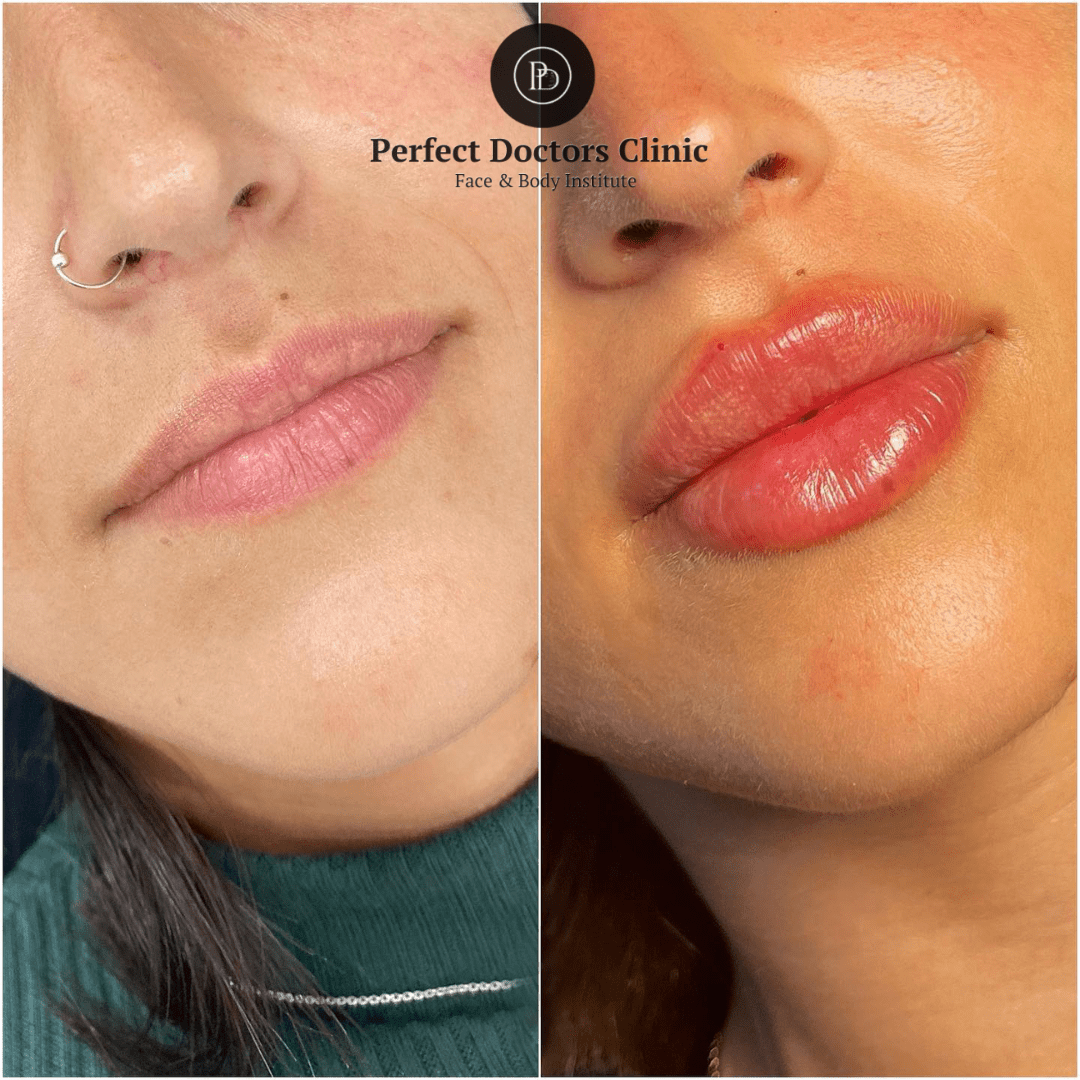Glue Ear Diagnosis and Comprehensive Care Pacific View ENT Clinic
What is Glue Ear?
Glue ear is one of the most common childhood illnesses, affecting children under the age of five the most, though it can sometimes persist into adolescence. Some adults may also be affected by glue ear.
For ears to work properly, the middle ear needs to be kept full of air. The eustachian tube, which usually does this, runs from the middle ear to the back of the throat. In children, this tube is not as vertical and wide as it will be when they get older, which means it doesn’t function as well.
When the eustachian tube becomes blocked, air cannot enter the middle ear. The cells lining the middle ear begin to produce fluid. This fluid can start as a runny liquid, thickening as it fills the middle ear. With fluid blocking the middle ear, it becomes harder for sound to pass through to the inner ear, making quieter sounds difficult to hear. It’s like listening to the world with both fingers stuck in your ears!
Glue ear is often, but not always, linked with ear infections, and it can sometimes develop unnoticed. A prolonged period of reduced hearing can affect a child’s speech development. Children with glue ear may also fall behind at school and become disruptive if they don’t receive extra support. Changes in behavior, tiredness, frustration, lack of concentration, preferring to play alone, and not responding when called may indicate glue ear symptoms.
What Conditions Influence Glue Ear?
Many factors can contribute to glue ear. These include colds, flu, allergies, and passive smoking. Children with conditions like cleft lip and palate, or genetic disorders such as Down’s Syndrome, may be more likely to develop glue ear, as they tend to have smaller eustachian tubes.
What Treatment is Available?
Glue ear generally improves on its own, though this can take some time. If glue ear isn’t causing major problems, a period of watchful waiting for about three months is often advised. However, if glue ear is causing poor hearing, speech delays, or recurrent infections, more intervention may be necessary, such as the insertion of grommets (small tubes) into the ear to help drain fluid.
Getting a child to blow up a special balloon through their nose, called autoinflation, can help clear fluid from the ear and improve hearing within a few weeks. However, children must practice this regularly, and younger children may find it difficult to use. Doctors may also try nose drops or nasal sprays to help, though the evidence for their effectiveness is limited. Antibiotics and antihistamines generally do not help with glue ear.
A hearing aid can sometimes be used to address the hearing and speech problems caused by glue ear, especially for those who are not suitable for surgery due to the risks associated with anesthesia.
Making Hearing Easier for Your Child
While glue ear can cause hearing difficulties, there are simple communication tips that can help your child. Always get their attention before speaking, face them directly, and maintain eye contact. Minimize background noise, speak clearly without shouting, and keep your normal rhythm of speech.
In school, teachers and nurses may notice that your child is struggling but may not immediately realize that hearing issues are to blame. Be sure to inform the teacher about your child’s hearing challenges so that appropriate accommodations can be made, such as ensuring they sit near the teacher and are encouraged to ask for things to be repeated.
In summary, glue ear can affect both children and adults, and while it often resolves on its own, there are treatments available for persistent or more severe cases. Understanding glue ear symptoms and treatment options can help ensure that both children and adults receive the support they need
Vertigo treatment
Patients frequently complain of dizziness, which can have many possible causes unrelated to the balance organ in the inner ear. Fainting attacks, heart problems, thyroid issues, and brain disorders can all lead to feelings of “light-headedness,” “giddiness,” and general imbalance. However, Vertigo Dizziness is a specific form of dizziness, often linked to problems with the inner ear. Vertigo refers to the sensation that either the environment is moving in relation to the patient or the patient is moving in relation to the environment. It is typically a spinning or rotatory sensation. Vertigo Dizziness is most commonly associated with inner ear disorders. In fact, ninety-nine percent of people who suffer from vertigo due to inner ear problems will recover with time, without any treatment. The ability to maintain balance is dependent on three systems—the eyes, joints, and the inner ear—which all provide crucial information to the brain.
Various factors can affect the inner ear and cause vertigo. One way to distinguish different types of vertigo is by the duration of the dizziness. Short-lived episodes of dizziness, lasting only a few seconds to minutes, are commonly caused by benign paroxysmal positional vertigo (BPPV), which typically comes on suddenly. It is often triggered by suddenly looking upwards or sideways, or when turning over in bed. BPPV can sometimes start after a whiplash injury or other head trauma, though there is often no obvious cause. Medium-length episodes of dizziness, lasting from a half-hour to several hours, are rarer and may be linked to Menière’s disease or endolymphatic hydrops.
These conditions cause severe vertigo accompanied by hearing loss and tinnitus, with symptoms lasting up to several hours. While hearing generally recovers once the vertigo resolves, it may deteriorate gradually over time. Longer episodes of dizziness, lasting days to weeks, are typically caused by infections like labyrinthitis (inner ear infection) or vestibular neuronitis (inflammation of the balance nerve). These conditions result in severe, rotatory dizziness that can last up to two or three weeks, with a slow return to normal balance, often accompanied by vomiting. Additionally, Sinus Infection Vertigo can cause dizziness due to pressure changes in the ear or head during a sinus infection, leading to a sensation of imbalance or vertigo-like symptoms.
To diagnose the cause of dizziness, specialist investigations are often required. These may include hearing tests, balance assessments, blood tests (though rarely), and imaging studies such as MRI or CT scans. These tests help identify the specific cause of Vertigo Dizziness and guide appropriate Treatment for Vertigo. In general, Treatment for Vertigo is symptomatic, aiming to control the symptoms without necessarily addressing the underlying cause. Treatment approaches may include rehabilitation exercises designed to speed up the brain’s natural compensation after inner ear disease.
These exercises can help hasten recovery and improve balance. In cases where medical treatment is ineffective, vestibular sedatives may be prescribed to alleviate symptoms of Vertigo Dizziness. If conservative measures fail, surgical options may be considered, ranging from the insertion of an ear tube to more invasive procedures that involve destroying the inner ear or dividing the nerves leading from the inner ear to the brain. Recent advancements in Treatment for Vertigo also include the use of drugs delivered directly into the ear through the ear drum, which can selectively target the inner ear’s balance mechanisms without affecting hearing. However, this treatment carries a risk of potential hearing damage.
In conclusion, while Vertigo Dizziness can be caused by various factors, particularly those related to the inner ear, the appropriate treatment—whether rehabilitation, medication, or surgery—can help manage symptoms and speed up recovery.
3 – Advanced Ear Infection Care in Camarillo | Pacific View ENT
The three most common Types of Ear Infections are otitis externa, otitis media, and otitis interna. Otitis externa, also known as an outer ear infection or swimmer’s ear, typically occurs when water gets trapped in the ear canal, leading to bacterial or fungal growth. Otitis media, an infection of the middle ear, is often caused by bacteria or viruses, commonly following a cold or respiratory infection. Finally, otitis interna, also known as an inner ear infection or labyrinthitis, affects the deeper parts of the ear, often leading to more serious symptoms like vertigo, hearing loss, and imbalance.
Common symptoms of Ear Infections across all types include pain, discharge, itching, deafness, imbalance, and sometimes a ringing in the ears. The severity of these symptoms can vary depending on the type of infection and the individual’s overall health. Treatment for ear infections is generally aimed at alleviating symptoms and addressing the underlying cause. Ear Infection Treatment may involve antibiotics or antifungal medications for bacterial or fungal infections, respectively.
In some cases, over-the-counter pain relievers and ear drops may be sufficient. However, when ear infections become chronic or more severe, Ear Infection Surgery may be required. Surgical intervention is typically necessary when there are complications like persistent fluid buildup, a ruptured eardrum, or damage to the inner structures of the ear. In such cases, surgery helps to drain fluid, repair damage, or prevent further complications. The choice of treatment depends on the type and severity of the infection, and it’s always important to consult with a healthcare professional for proper diagnosis and care.
4- Causes of Tinnitus and Treatment Options | Pacific View ENT
Understanding Tinnitus Struggling with tinnitus? Learn about the causes and discover the best medical treatment for tinnitus at Pacific View ENT Clinic. Expert care in Camarillo.
Tinnitus is a condition where patients perceive noises in their ears or heads, often masked by environmental sounds. When these noises become noticeable in daily life, they can be quite irritating, leading to the clinical term “tinnitus.” The sounds can vary widely in pitch, ranging from low to high frequencies, and may be intermittent or permanent. It’s important to note that hearing words, songs, or voices does not fall under the definition of tinnitus. The intensity of these sounds can change with various stimuli, such as exercise, coffee, or alcohol. Even children can experience tinnitus, which can cause significant worry for those who first notice it, sometimes leading them to fear more serious conditions like a brain tumor. It’s estimated that 30% to 40% of the population will experience tinnitus at some point, particularly if they have hearing loss. Understanding the causes of tinnitus is crucial for identifying the right medical treatment for tinnitus, as many will benefit from counseling or devices. The best treatment for tinnitus often involves a combination of approaches to effectively manage symptoms.
Further Investigations
When tinnitus affects only one ear, it requires further investigation by an ENT surgeon. This typically includes hearing tests, blood tests, and imaging scans. However, not everyone with bilateral tinnitus will need extensive testing, as often no definitive cause is identified. In rare cases, serious conditions, such as a tumor of the auditory nerve, may be discovered.
Medical Treatment for Tinnitus
The medical treatment for tinnitus generally falls into two main categories: counseling and mechanical devices. Counseling can help patients manage their symptoms, while devices like hearing aids or white noise generators can provide relief. Although various alternative methods are often suggested in literature, many are largely discredited. Drug treatments tend to be ineffective, and while some sedatives have been used, they are not recommended for long-term use and do not address the underlying issue.
Best Treatment for Tinnitus
Most patients find that they can control their tinnitus without significant medical intervention. Through a thorough consultation and appropriate investigations, we can help exclude treatable causes and recommend the best treatment for tinnitus tailored to each individual’s needs. Understanding the causes of tinnitus is crucial for effective management, allowing patients to regain a sense of normalcy in their lives.
5- Advanced Hearing Loss Solutions in Camarillo | Pacific View ENT
Hearing loss can affect people of any age. One in six adults has some degree of hearing loss, which increases to three in four people over the age of 75. Children can also be affected, usually due to fluid or infection in the middle ear, but also due to congenital problems or viral illness during early childhood. Recognizing hearing loss symptoms early is important for timely hearing loss treatment.
The Mechanism of Hearing
We hear sounds through the ear canal and eardrum, where vibrations are transmitted through the ossicles (small bones in the ear) to the inner ear, or cochlea. Here, sound waves are converted into electrical signals, which are passed on to the brain along the auditory nerve.
Types of Deafness
The causes of deafness can be broadly grouped into conductive hearing loss (due to problems in the ear canal and middle ear) and sensorineural hearing loss (which involves issues with the inner ear or the auditory nerve).
Conductive hearing loss can occur due to issues like wax blocking the ear canal, infection, fluid buildup, trauma, or fixation of the ossicles in the middle ear. Fortunately, these conditions can usually be treated with appropriate hearing loss treatment.
Sensorineural hearing loss, on the other hand, is caused by problems in the inner ear or auditory nerve. Common causes include age-related hearing loss (presbycusis), viral infections, trauma, certain medications, noise exposure, and congenital issues. While some inner ear problems are reversible, most sensorineural hearing loss is permanent. In rare cases, it may be caused by a growth or tumor in the brain.
As technology advances, hearing aids continue to improve, helping to amplify sounds heard by the inner ear, which can partially overcome hearing loss symptoms improve quality of life for those affected.










